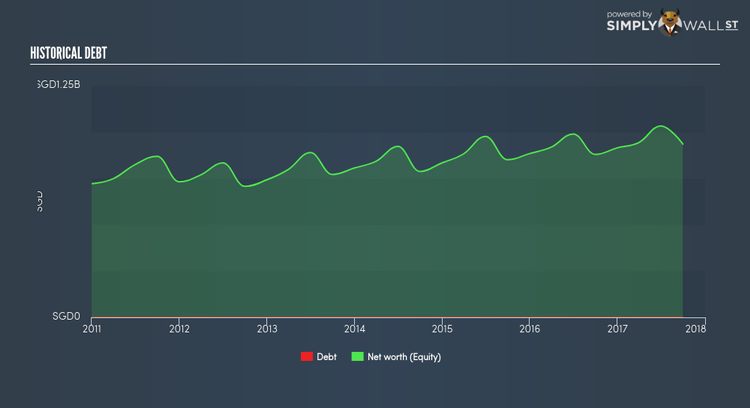What is Behind Singapore Exchange Limited’s (SGX:S68) Superior ROE?

Singapore Exchange Limited (SGX:S68) outperformed the Financial Exchanges and Data industry on the basis of its ROE – producing a higher 38.29% relative to the peer average of 4.95% over the past 12 months. While the impressive ratio tells us that S68 has made significant profits from little equity capital, ROE doesn’t tell us if S68 has borrowed debt to make this happen. We’ll take a closer look today at factors like financial leverage to determine whether S68’s ROE is actually sustainable. View our latest analysis for Singapore Exchange
Breaking down ROE — the mother of all ratios
Firstly, Return on Equity, or ROE, is simply the percentage of last years’ earning against the book value of shareholders’ equity. An ROE of 38.29% implies SGD0.38 returned on every SGD1 invested. Generally speaking, a higher ROE is preferred; however, there are other factors we must also consider before making any conclusions.
Return on Equity = Net Profit ÷ Shareholders Equity
ROE is measured against cost of equity in order to determine the efficiency of Singapore Exchange’s equity capital deployed. Its cost of equity is 8.38%. This means Singapore Exchange returns enough to cover its own cost of equity, with a buffer of 29.91%. This sustainable practice implies that the company pays less for its capital than what it generates in return. ROE can be dissected into three distinct ratios: net profit margin, asset turnover, and financial leverage. This is called the Dupont Formula:
Dupont Formula
ROE = profit margin × asset turnover × financial leverage
ROE = (annual net profit ÷ sales) × (sales ÷ assets) × (assets ÷ shareholders’ equity)
ROE = annual net profit ÷ shareholders’ equity
The first component is profit margin, which measures how much of sales is retained after the company pays for all its expenses. Asset turnover shows how much revenue Singapore Exchange can generate with its current asset base. The most interesting ratio, and reflective of sustainability of its ROE, is financial leverage. Since ROE can be artificially increased through excessive borrowing, we should check Singapore Exchange’s historic debt-to-equity ratio. Currently, Singapore Exchange has no debt which means its returns are driven purely by equity capital. Therefore, the level of financial leverage has no impact on ROE, and the ratio is a representative measure of the efficiency of all its capital employed firm-wide.
What this means for you:
Are you a shareholder? S68 exhibits a strong ROE against its peers, as well as sufficient returns to cover its cost of equity. Since ROE is not inflated by excessive debt, it might be a good time to add more of S68 to your portfolio if your personal research is confirming what the ROE is telling you. If you’re looking for new ideas for high-returning stocks, you should take a look at our free platform to see the list of stocks with Return on Equity over 20%.
Are you a potential investor? If S68 has been on your watch list for a while, making an investment decision based on ROE alone is unwise. I recommend you do additional fundamental analysis by looking through our most recent infographic report on Singapore Exchange to help you make a more informed investment decision.
To help readers see pass the short term volatility of the financial market, we aim to bring you a long-term focused research analysis purely driven by fundamental data. Note that our analysis does not factor in the latest price sensitive company announcements.
The author is an independent contributor and at the time of publication had no position in the stocks mentioned.


